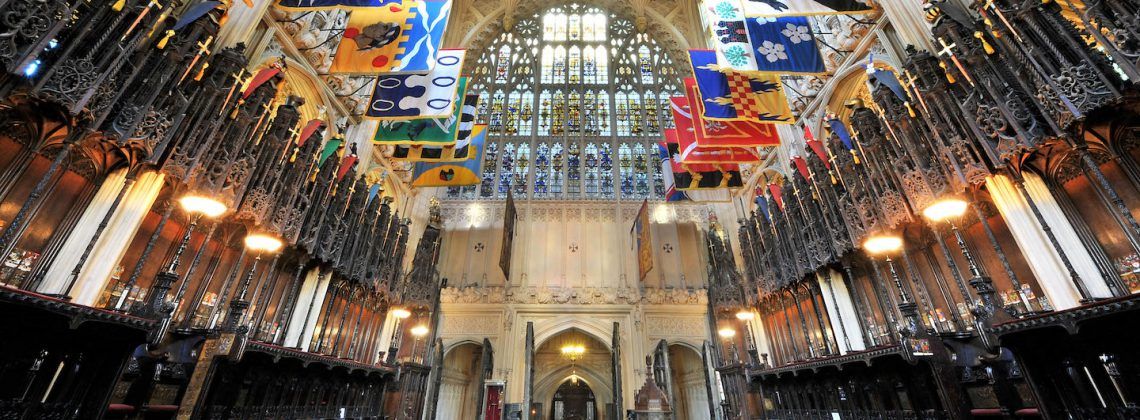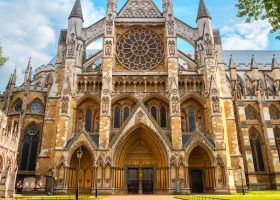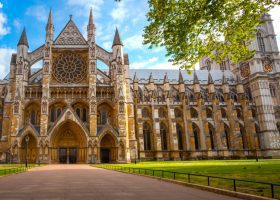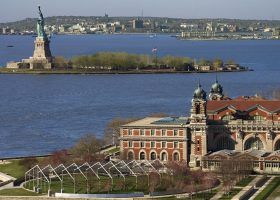Heading to London and thinking about hitting up Westminster Abbey? Smart move. But what makes this place so legendary, and what should you focus on when you’re there? We’ve put together a no-nonsense guide—brief history, key highlights—so you can make sure your visit is nothing short of unforgettable. Trust me, you’ll want to see it all.
Pro Tip:
- Planning what to do on your trip to London? Bookmark this post in your browser so you can easily find it when you’re in the city.
- Check out our guide to London for more planning resources.
- If you’re short on time, check out our London in a Day Tour for an easy and exciting way to see the best of London.
Top Things to See at Westminster Abbey
This centuries-old church is an absolute must-see, but what can you expect to find at Westminster Abbey? For starters, you can’t miss the legendary coronation chair that’s been the centerpiece of royal ceremonies since the 14th century.
But that’s just the beginning. The Abbey houses the tombs and effigies of over 3,000 remarkable individuals—each with their own fascinating story. And don’t overlook the stunning Quire, the majestic nave, or the awe-inspiring exterior, all of which deserve your attention.
Ready to dive deeper? If you’re interested in exploring this historic site with an expert guide, check out our Westminster Abbey tours. We handle all the details, so you can focus on soaking in the beauty of this iconic London landmark!
Not ready to book a tour? See our best Westminster Abbey tours to take and why.
11. The Coronation Chair

St George’s Chapel | UK’s Oldest Furniture | Stone of Scone | Oliver Cromwell
Traditionally, Britain’s monarchs are crowned in an area of the Abbey called the High Altar, but the Coronation Chair is on display in another section called the Nave. However, you’ll find it protected behind railings in St George’s Chapel.
In Westminster Abbey’s official tour book, it’s clearly stated that the same oak chair has been used for every coronation since the 14th century. Additionally, the history section of the Abbey website tells us it was originally completely gilded to give it the look of a solid gold throne. Over the years, however, much of this gold leaf has worn away.
The Stone of Scone
There are four 18th-century gilt lions at the foot of the chair. But by their positioning, you might suppose they symbolically guard the Stone of Scone, which was once kept beneath the chair. In the tour book, you can read how Edward I ordered the stone’s capture from the Scots in 1296 to use in English coronations.
Interestingly, the Coronation Chair was made to hold the stone, so the stone came first. However, since the stone historically belonged to the Scots, they successfully campaigned for its return. Although it was returned in 1996, it is still used for coronations at Westminster Abbey.
Oliver Cromwell
This chair is reserved for monarchs’ coronations yet the Westminster Abbey website (history section) informs us that when Oliver Cromwell was made Lord Protector his ceremony took place on the Coronation Chair.
Despite not being a royal and, in fact, being an anti-royalist, he wore regal-looking robes for the occasion. Again breaking with tradition, he had the chair moved from Westminster Abbey to Westminster Hall for the ceremony.
Without doubt, it is one of the world’s most famous chairs. Also, it is older than any other piece of furniture in the UK. This refers to furniture that is still in use. For example, not furniture that is stored away, merely decorative, or in disrepair and therefore unusable.
Popular London Tours
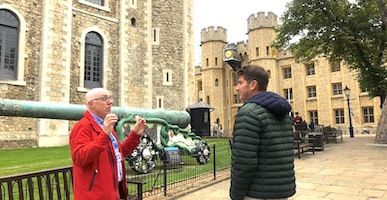
Best Selling Tour
Legends and Lore Tour of the Tower of London
The Tower of London’s maze-like layout and endless crowds can leave you lost, missing key sights and powerful stories. Our guides ensure you won’t miss a thing. Begin with a Thames boat ride to the Tower, then follow your expert guide through its historic walls to see the dazzling Crown Jewels. From chilling tales of betrayal to towers where history’s most infamous figures met their end, this tour unlocks the secrets of London’s iconic fortress.
See price
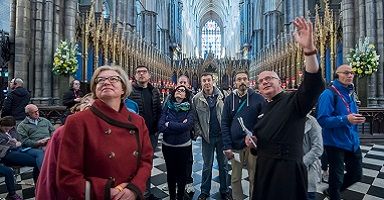
Top Selling Tour
London Walking Tour with Westminster Abbey and Changing of the Guard
Without a plan, visitors to London end up missing Westminster Abbey’s hidden stories and losing out on the best view of the Changing of the Guard. With us, skip the line and enter Britain’s most iconic church, led by an expert who reveals royal secrets from coronations to ancient tombs. Then, secure the ultimate spot to witness the Guard’s iconic march. Don’t settle for rushed glimpses—this tour is your key to experiencing London’s grandeur with nothing left unseen.
See price
Not ready to book a tour? Check out the best London tours to take and why.
10. The Grave Of The Unknown Warrior

World War I | Red Poppies | Congressional Medal | Churchill’s Memorial Close By
This is the most important grave in the whole Abbey and the only one that no one is permitted to walk on. The Abbey audio guide tells us it honours an unknown British soldier who died in the French trenches during World War I.
His remains were recovered from France and buried in the Abbey in 1920. According to the guide, the grave contains soil from the French battlefield. The burial service included a dignified line-up of 100 Victoria Cross-decorated soldiers.
You’ll notice the grave has a frame of red poppies. This is because these flowers grew in the battlefields of Flanders and Belgium, which is why we now commemorate Poppy Day.
On Poppy Day, it is a popular spot for visitors. However, throughout the year, dignitaries and heads of state make a point of paying their respects and laying wreaths.
The USA recognised the sacrifices of the British forces by awarding them a Congressional Medal, which you will find close to the grave. Although, the grave commemorates World War I efforts, don’t forget to visit the memorial to Winston Churchill, Britain’s great World War II leader. It’s close by in the centre of the Nave.
9. Poets’ Corner

Charles Dickens | Shakespeare | Sir Laurence Olivier | Bronte Sisters
The Abbey’s tour book states Geoffrey Chaucer was the first poet buried here in 1400. The celebrated writers and dramatists also buried or commemorated in this section of the south transept include Charles Dickens, Rudyard Kipling, and Sir Laurence Olivier.
You’ll notice a checkerboard of mainly black and white commemorative plaques on the floor. The English Romantic poet Lord Byron and poet/writer Dylan Thomas are next to each other. With Lewis Carroll’s plaque below them, together they form a rather distinguished but accidental T-shape of literary greats. But there are numerous famous writers in this section.
Look out for commemorative plaques and statues to historic authors the Bronte Sisters (Emily, Charlotte, and Anne) and Jane Austen. Also, see William Shakespeare’s statue and a bronze bust dedicated to poet, artist, and engraver William Blake.
Although there’s a significant number of writers honoured in Poets’ Corner, you’ll also find celebrated actors such as David Garrick (1716-99) who has a West End theatre named after him. And great achievers in music such as composer George Frederick Handel (1685-1759).
8. The Memorials and Burial Sites of Notable Figures
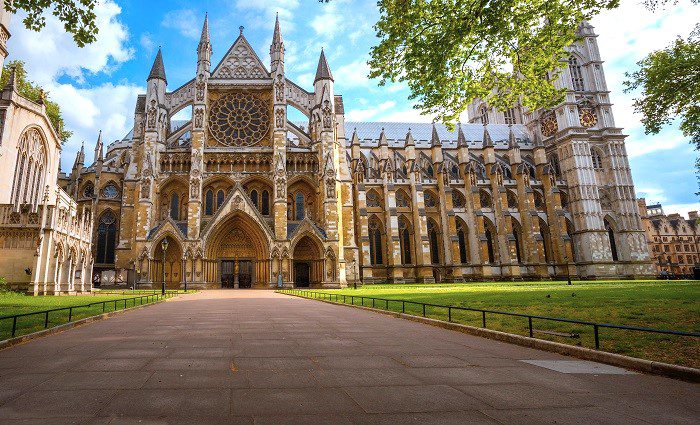
Memorials | Sir Isaac Newton | Charles Darwin | Charles Dickens | Stephen Hawking
Westminster Abbey is a significant site for memorials and burial places of prominent figures such as Sir Isaac Newton, Charles Darwin, Oliver Cromwell*, Charles Dickens, and Stephen Hawking. Many of these notable scientists are gathered in a specific area often referred to as the “Scientists Corner” within the Abbey.
*While not currently buried in the Abbey, Oliver Cromwell was initially buried there, but his body was later exhumed.
7. Chapter House

Medieval Paintings | Medieval Tiled Floor | 1st English Parliament | UK’s Oldest Door
Built in 1250, it was originally a central meeting room for monks. On the official website (history section) it says the name comes from the practice of holding ‘chapter’ or reading from the bible and other daily duties.
Also, in the 14th century, the House of Commons gathered here to discuss political issues and state affairs. According to the site, the English Parliament actually began here because the preliminary King’s Great Council convened here in 1257.
Medieval Paintings
You’ll notice medieval paintings on the walls featuring prophetic biblical scenes. The information board in the Chapter House says they depict the Apocalypse in the Book of Revelation.
However, the Chapter House’s stand-out features are the stunning stained glass windows. Westminster Abbey’s official tour book states they were first introduced during the Victorian period and had a makeover in the 20th century.
Medieval Tiled Floor
As you study these windows, your eyes will, inevitably, be drawn to the magnificent pillar in the centre of the room that reaches the ceiling. The ceiling’s Gothic fan-like design accentuates these windows arching down from it.
Another notable feature is the remains of a medieval tiled floor, roped off in the centre of the room. The official website describes it as: “one of the finest medieval tile pavements in England.”
Oldest Door In The UK
On entering the vestibule leading to the Chapter House, you’ll notice a small wooden door on your right. This is the oldest door in the UK and the official tour book dates it to around 1050, the period of St. Edward the Confessor.
It’s an important feature because the King replaced the Saxon church with a more substantially-sized Norman one. It’s, perhaps, one of the few links to an era when the Abbey was first known as the westminster (with a small w).
From this Chapter House item, we can see Edward’s significant intervention in the Abbey’s early years. The website describes him as “the re-founder of Westminster Abbey.”
However, other monarchs such as Elizabeth I also lay claim to being the “refounder”. On the same website, we are informed that she refounded the Abbey as a Collegiate Church under the authority of the Sovereign. This is a direct line to the monarchy that stands today, so the title of “refounder” is certainly contestable. The complex evolution of this religious institution throughout history requires careful examination.
Not ready to book a tour? Check out our London Guide for more resources.
6. Pyx Chamber

11th Century Tiled Floor | Oldest Room in London | Oldest Part of Abbey | Royal Treasury
This medieval room can be found in a section of the Abbey called East Cloisters. The official tour book tells us it was built in A.D. 1070-80 and is the oldest room in London and also one of the oldest constructs in the Abbey.
The name comes from its function as a 13th-century royal treasury. The book points out that the word “pyx” refers to a box (pyx) containing pieces of gold and silver. So, you can understand the heavy oak door! It originally had five locks.
You’ll notice the medieval tiled floor is still intact. The Abbey’s website informs us that some of these tiles date back to the 11th century. Other notable features are the oaken chests once used to store state documents and monk’s robes known as copes.
Although access to the room is restricted, the door is open so you can see inside. Also, you can take a few steps onto a platform beyond the door to get a better view.
5. The High Altar

Coronation | Cosmati Pavement | Church Services | Best Central Marker
The High Altar has two main purposes. Traditionally, it is where Britain’s monarchs are coronated. The Coronation Chair is displayed in another part of the Abbey but during coronations, it is placed facing the High Altar. The Abbey’s audio guide informs us that Queen Elizabeth II was crowned here in 1953 and over 8,000 guests attended. In general, the High Altar is where visitors congregate for church services.
Here are some interesting features to look out for. Don’t miss the centrepiece elaborate gilded screen. It was designed by Sir George Gilbert Scott in 1867. In the tour book by Esme West, you can read how the embroidered hangings change according to the church season.
Make a point of visiting the Cosmati pavement just in front of the altar. It was laid in 1268 and you’ll surely appreciate the craftsmanship in the glass and marble design. Westminster Abbey’s own tour guidebook describes it as “the finest example in Northern Europe”.
You might find it helpful to remember, the High Altar is not too far from the main entrance. It’s also very close to other important spots such as Poet’s Corner, The Choir, the North Ambulatory, and the entrance to Cloisters. So, it’s a great central marker in case you get lost!
4. The Quire Screen (And Choir)

Gateway | Choir | Scientists | Sir Isaac Newton | Charles Darwin | Stephen Hawking
In an area of the Abbey called the Nave, you’ll find a magnificent stone screen that separates the Nave from the Choir section. This is the Quire Screen. The audio guide gives its function as an ornate gateway found in all such monastic churches. The gilded parts are real gold. The original design can be traced back to medieval times. But the Westminster Abbey website will confirm it was renovated in 1834.
To the left of the Quire Screen, you’ll find a number of memorials to Britain’s greatest scientists. Look out for the graves of Sir Isaac Newton, Charles Darwin, and Stephen Hawking.
The Choir section of the Abbey is on the other side of the screen/gateway. Here, you’ll find choir stalls for the daily services, some of which are assigned to high commissioners of the Commonwealth.
The current Choir accommodates twenty-two choristers and was built in the 19th century. However, its origins lie in the monastic choirs of medieval times. The Abbey’s audio guide informs us that if these medieval choristers arrived late they had to lie face down on the floor!
Not ready to book a tour? Check out our London Guide for more resources.
3. The Queen’s Window
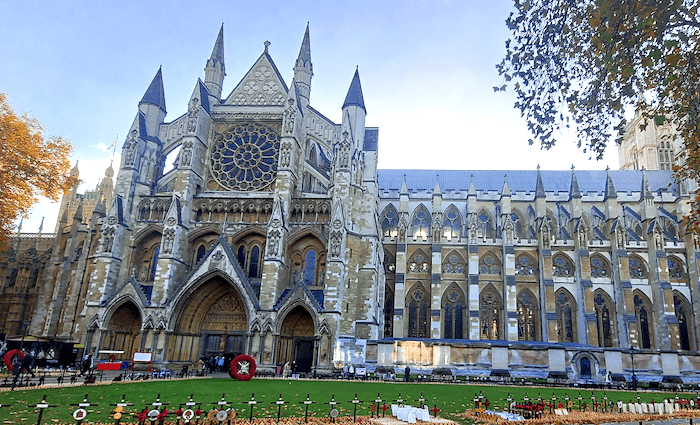
Artist David Hockney | Stain Glass Window | Yorkshire Countryside | Queen Elizabeth II
David Hockney, one of Britain’s greatest living artists, was invited by the Dean of Westminster to create a stained glass window that celebrated the reign of Queen Elizabeth II. He was told that the commission must be true to his own artistic style and not necessarily follow the Westminster Abbey signature. The work was completed in 2018.
And it is markedly different from the faith-based and regal designs that dominate the Abbey. Hockney’s simplistic, colorful style can be described as faux-naive and has a very childlike feel. On the Abbey website, he claims the work is set in his Yorkshire homeland. You can also read on the site how its landscape features show the Queen’s connection to the countryside. Traditional stained glass artists from Barley, York, directed by Hockney, helped create the piece.
2. Lady Chapel
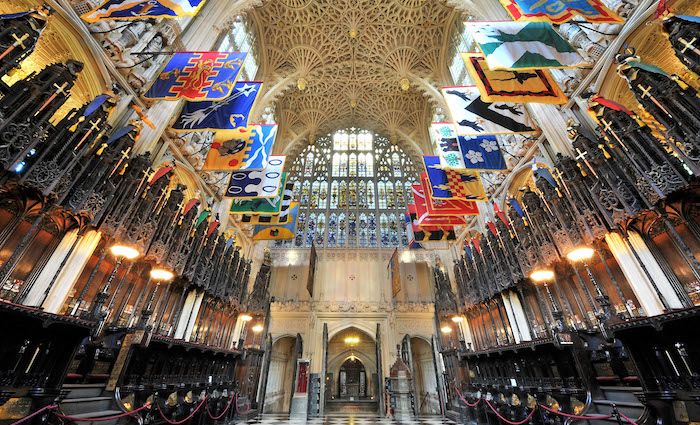
Henry VII | The Reformation | Catholics vs Protestants | Church of England | Henry VIII
According to the Abbey tour book, The Lady Chapel gets its name from the Blessed Virgin Mary. Henry VII (1457 – 1509) had it constructed to contain the remains of Henry VI but ultimately he was never moved from his original burial place in Windsor. However, Henry VII and his wife were buried here. Interestingly, the Chapel is also known as King Henry VII’s Chapel in his honour.
Elizabeth I and Mary I
Here lie the tombs of Elizabeth I and Mary I. The coffins of these two queens, who are half-sisters, were placed one on top of the other. Elizabeth’s tomb is the visible one. A grand white marble effigy shows her in the death state clutching a sceptre.
They were both daughters of Henry VIII (1491- 1547) who ruled during a period of religious turmoil, which set his new Church of England against Catholicism. The Abbey tour book gives a brief history of these events and the opposing views held by the sisters.
Mary I was a Roman Catholic and during her reign, Britain resumed close ties with the pope. According to the Abbey website, even her coronation oil was a gift from the Catholic bishop of Arras. It replaced the oil “tainted” by her Protestant brother Edward VI during his coronation.
Mary was feared and despised for persecuting Protestants, for which she gained the nickname “Bloody Mary.” But these were topsy-turvy times, and her sister Elizabeth I, who was crowned after her, favoured Protestantism. Therefore, the Church of England became the state religion and she upheld the desires of her father Henry VIII.
The Reformation, as this religious split was known, divided the sisters in life but not in death. As we have seen, they were buried together. The official tour book (edited by Esme West) underscores this by referencing the Latin inscription on the tomb: “Partners both in throne and grave, here rest we two sisters, Elizabeth and Mary, in the hope of one Resurrection.”
1. North Ambulatory

Large More Elaborate Tombs | Edward The Confessor | Henry III | St John The Baptist Chapel
Edward The Confessor
The North Ambulatory is easily found—its entrance is close to Westminster Abbey’s main entrance. Here you’ll find a number of historic and elaborate must-see memorials and tombs side-by-side. Edward the Confessor’s shrine is closed to visitors because of its fragility. But you can still see the lavish care and craftsmanship that went into it.
He’s an important figure because he led the most significant restructuring in its early history. According to the website, with the pope’s sanction, he built a large Norman church in 1065 dedicated to St. Peter in place of the modest Saxon one. Because of this, he is credited with being the refounder of Westminster Abbey and is described as such on the site.
It’s significant that the Abbey only became known as Westminster during his reign. Minsters were monastic communities and this one was in the west—hence Westminster. Both the official tour book and the website point out this fact.
After his death, the Pope declared him a saint. This canonization led to the Abbey becoming a place of pilgrimage and increased its popularity amongst worshippers.
St. John The Baptist Chapel
Directly opposite Edward the Confessor’s shrine is St. John the Baptist Chapel. Inside you’ll find the tallest memorial in the Abbey, which is dedicated to Henry Carey, Lord Hunsdown (1525-96), Queen Elizabeth I’s Lord Chamberlain.
Henry III
Another of the lavish-looking tombs that dominate this section is that of Henry III (1207-72). The official tour book provides lots of information about his contribution to the Abbey’s design.
His architects are responsible for the look of the Abbey as it is today. He had it rebuilt in the Gothic style that was fashionable in French cathedrals. You’ll notice decorative mosaic pieces missing from his tomb. An information board beside the shrine says this is because of pilgrims stealing them.
Not ready to book a tour? Check out our London Guide for more resources.
What Is Westminster Abbey?
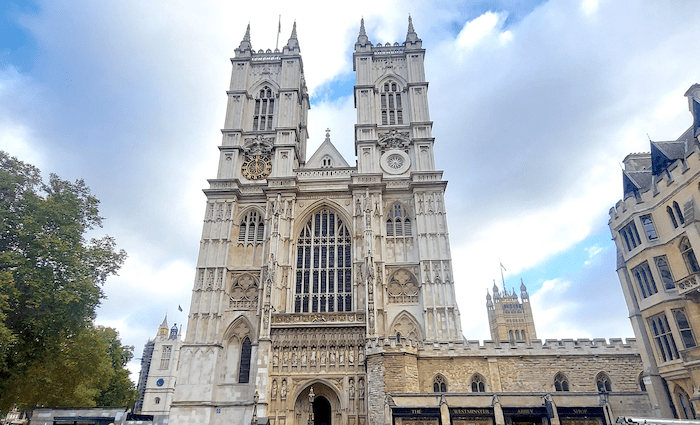
Where Did the Name Come From?
One of the most important figures in the Abbey’s history is St. Edward the Confessor (1002 – 1066). The Abbey’s official tour says that in 1065 he had the church reconstructed as a sizeable place of worship and increased its monastic land. Interestingly, the book also says the church became known as the westminster (with a small w) during his reign because minsters were monastic communities and this one was situated towards the west of the city.
Who Is Responsible For the Architectural Style?
The Abbey we see today was built in the 13th century by Henry III. His architects followed the Gothic style that embodies French cathedrals. Find his tomb in the Abbey’s North Ambulatory section, close to Edward the Confessor.
